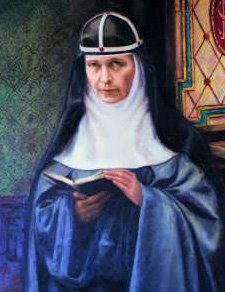The Roman calendar of saints lists Saint Peter Canisius’ feast day as December 21; on the Jesuit ordo his feast is observed today.
Saint Peter
Canisius is well known for his theological expertise, his teaching and preaching and the work of evangelization he did in Germany and other places where the Protestants destroyed the unity of the Church. His approach to theological engagement is noteworthy for his judgment based on prudence and charity. Saint Peter neither wanted to heighten division nor to embitter relations with the
Magisterial Reformers with intellectual engagement on the “hot button issues” because in his mind, theological
disputation only succeeded in fueling deeper resentment and hysteria toward the
Catholics and did not advance the argument and knowledge of the Truth. In a letter to his Jesuit superior, Saint Peter Canisius said:
It is
plainly wrong to meet non-Catholics with bitterness or to treat them with
discourtesy. For this is nothing else than the reverse of Christ’s example
because it breaks the bruised reed and quenches the smoking flax. We ought to
instruct with meekness those whom heresy has made bitter and suspicious, and
has estranged from orthodox Catholics, especially from our fellow Jesuits.
Thus, by whole-hearted charity and good will we may win them over to us in the
Lord. Again, it is a mistaken policy to behave in a contentious fashion and to
start disputes about matters of belief with argumentative people who are
disposed by their very natures to wrangling. Indeed, the fact of their being so
constituted is a reason the more why such people should be attracted and won to
the simplicity of the faith as much by example as by argument.
With Saint Peter Canisius, let us pray:
Let my eyes take
their sleep, but may my heart always keep watch for you.
May your right hand
bless your servants who love you. May I be united with the praise that flows
from you, Lord Jesus, to all your saints; united with the gratitude drawn from
your heart, good Jesus, that causes your saints to thank you; united with your
passion, good Jesus, by which you took away our guilt; united with the divine
longing that you had on earth for our salvation; united with every prayer that
welled from your divine heart, good Jesus, and flowed into the hearts of your
saints. Amen.








